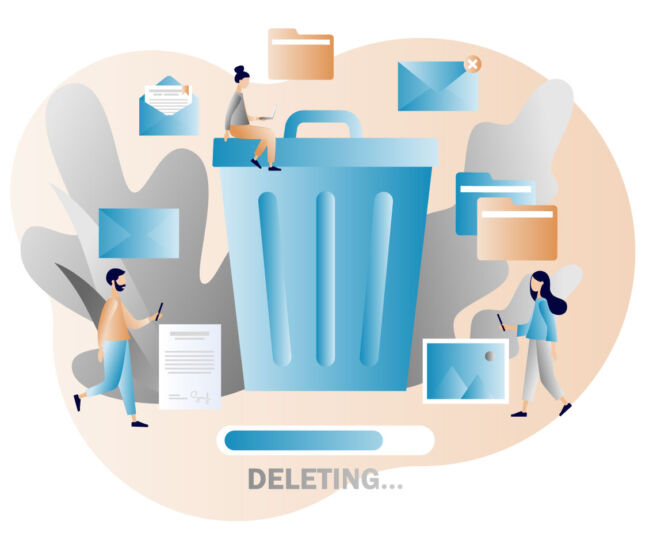
best practices for a happy and healthy database
By Susan DeMatei
What do you think of when you hear “data hygiene”?
Most people either have no idea what the term means or believe it involves tedious hours mired in excel. But like a tune-up on your car, it should translate to increased performance and sales for marketing programs.
Why? Because just like that tune-up, our engine, or in this case our database, needs periodic maintenance to clear out the “gunk” and refresh the connections. Even if we’re growing our list and sending out great emails, our work isn’t done on behalf of the database — we need to keep it healthy.
How do we keep a database healthy
If the reason to have a database is for sales, then the ultimate indicator of health should be strong sales, right?
So, what are the predetermining steps for sales?
Database Size:
Your database must be the size to reasonably expect that the sales needed to sustain your business can be derived from it.
Size is not a function of data hygiene but instead is tied to your lead generation efforts. Whether this is done through a tasting room or event table, accumulating names, or advertising on Facebook, a continual flow of new prospects is like oxygen to your database. Databases decay at a rate of about 2% a month – so every year, you can count on losing 25% of your database. Target growth over 2% a month to not slip backward.
Best collection practices say to review all signup forms for typos, fake names, or duplicates before uploading. Talk to your tasting room staff if you routinely see false addresses like “noemail@gmail.com” to find out why they feel pressured to make up data. There is likely some process that needs revision or a technical barrier that requires an address to continue. A conversation can identify various data collection challenges while impressing a usable database’s importance to your company.
A second hygiene practice at this stage is to attach a source to your new prospects so that you can continually monitor them to judge their quality. Ask yourself how many leads you got from each activity, how many of them ended up buying, and how long it took them to buy. Next year, this will be invaluable information when planning out activities to ensure you move forward with the activities that yield the best quality leads.
Database Validity:
The individuals in your database need to receive your emails without flags or filtering.
You can instantly see the validity of your database when you send a mass email by looking at the bounces and invalid addresses.
Bounces are typically categorized into soft or hard bounces. A soft bounce is temporary and, in most cases, a setting. The most typical one is an “out of the office” message. The email address is valid; they’re just not getting this email delivered at this time. Most Email Service Providers (ESPs) will attempt to redeliver to an address marked as a soft bounce multiple times over the subsequent campaigns before flagging it as a severe deliverability problem.
A hard bounce is a server error and means the address is no longer on that domain. Servers do go down temporarily for reasons like scheduled maintenance, so most ESPs will still try a bounce two or three times before marking it permanently undeliverable.
There is a third category. Let’s call these Unmailables. Unmailables are junk and so obnoxious that the ESP doesn’t even try to send them. They are blank or data in the wrong field (e.g., the phone number in the email space). They can be made-up domains that don’t exist (like noemail@noemail.com). But sometimes there is an obvious typo you can fix, like yahoo or Gmail is spelled wrong. And sometimes, that email address is in the phone number field, so these are worth investigating.
Customer Trust:
Upon seeing the email in their email box, the recipient must believe that the source is trustworthy and relevant enough content to open the email.
You must know how your ESP defines an “open” email. There are differences in how mail apps track this data point. Most notably, Apple’s Privacy updates for iOS 15 that preload data create a false “open” to make tracking less reliable. (And this isn’t minor. In 2021, Apple devices accounted for approximately 52 percent of all email opens, according to Litmus.)
In addition, gain agreement from your management if you are reporting on total or unique opens (because someone can open up the same email several times.) At WGM, we report on uniques because it best indicates how many individuals responded, and the same goes for clicks.
Customer Interest:
The content of the email must be compelling enough to provoke further action like a click to a website.
Clicks are also not as straightforward as one might think. Some Email Service Providers count unsubscribes as links, for instance. Here is where coordination with Google Analytics is critical to overlay the bounce rate of your email traffic on the landing page (because a qualified visitor will stay and read and purchase.)
Note: Conversion, or sales, is ultimately up to the landing page. An email can deliver a target somewhere, but it can’t close the deal.

Benefits of data hygiene
Increased customer acquisition
By continually removing dead contacts, the true quantity is visible and your team is more focused on growth.
Boots sales and revenue
Companies see up to 70% more revenue generated just by keeping contact databases clean and updated. (Vertify)
Improve decision making
In most databases, 40% of contacts need updates. 66% of people change jobs annually. (Demand Gen report/Introhive)
Optimized Productivity
Poor data quality can cost an organization 20% of their annual revenue. (Experian)
A Simple But Critical Hygiene Exercise
Pull your entire database with open, click and bounce information from your last email campaign.
Dedupe. And do this based on name, address, and email address.
Sort all the bounces and put them on a different sheet. Review these for typos or duplicates and clean up what you can.
If you are lucky enough to have sales data, divide the group into purchasers and those who have never purchased. Pull out Wine Club members or multiple buyers and consider calling them on the phone for an updated address. You may also want to add an ongoing postcard program where you drop a card in the mail asking customers to update their email. For the others, if they have purchased, leave them be for a record of purchase history. But if they’ve never bought from you and bounced, you should be able to delete them.
Sort the undeliverables and do the same as above:
- Fix issues.
- Divide into sales and no sales.
- Reach out to valuable contacts and delete empty records.
Do the same with unsubscribes as the first two above. The only difference here is that you should pull viable email addresses and upload them to Facebook to target your next campaign. (Just because they didn’t want an email doesn’t mean they never want to hear from you again.)
You should be left with only customer records with sales attached to them that you cannot email. You will want to keep them for a historical sales record, but you don’t want them muddying up your data. For this group, you can tag them as non-viable, so you don’t keep pulling them for each email.
It’s good to do this clean-up periodically. But how often and how deep you go down the rabbit hole depends on the value of this potential customer to you and how much time you have on your hands.
Most experts recommend some type of database clean-up quarterly. If you work in a busy tasting room, you may want to perform them monthly. But with all the evidence that “cleanliness is next to responsiveness”, there is a compelling argument for making data hygiene part of your routine marketing schedule.


